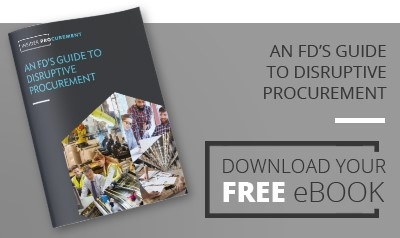The pandemic and Brexit together represent a shock of unprecedented proportions that have transformed the economy and changed priorities. I’ve begun to run out of superlatives to describe the scale of the upheaval we have all experienced in the last year. Manufacturing and construction have certainly fared better than some parts of the economy like retail and hospitality, but we are beginning to see the shoots of recovery everywhere. Now is the time to take a hard look at your supply chain and to create value. In my long experience, most companies underestimate this opportunity by as much as 50%. And the value can be delivered in as little as 90 days! Our new research featured in UK Manufacturing Barometer clearly demonstrates some of the issues you need to face into.

These twin shocks of the last 12 months have clearly exposed some structural weaknesses in how companies manage their supply chains and that makes it easier to address what otherwise might just go in the ‘we’ve always done it this way’ box. Have your team recognised where your vulnerabilities lie?
A look at shipping
For example, shipping costs can spiral unexpectedly and the availability of product can disappear altogether – supply chains can simply break as the Ever Given has rather dramatically demonstrated. A cheap listing price for a service, component or raw material is irrelevant if getting it to your factory gets pricier or if you simply can’t get it there at all. Can you consider sourcing your supplies closer to home? For example, although lower pricing from China is attractive, if you are growing your sales rapidly, a long supply chain makes the business less resilient and will tie up mountains of working capital.
Understanding ESG implications
There are the environmental considerations of long-distance transport too – if you want to attract the growing legion of ESG-focused investors this is now absolutely essential (and the more investors you can appeal to, the more chances you have of getting a premium valuation.) So rather than only aiming for the lowest unit price for a component, the real win may come from sourcing products closer to home and the payoff is more rapid sales growth with less environmental impact and a lower cash funding requirement. It might cost a little bit more, but a simpler, shorter supply chain will help you maximise margin through better product availability and take market share from less agile competitors.
Risk management is critical
Secondly, the dislocation has provided an opportunity to step back from the day-to-day operation, take stock and consider changes that could really transform a business and improve risk management. Even in normal times, most businesses have unnecessary costs, but in this post-Covid world the opportunity is considerable - for example reducing occupancy costs with fewer people working on-site, especially in office-based jobs or reducing fleet costs since people are no longer moving around. How long is it since your IT contracts were fully examined and reviewed? Are you paying for services in the supply chain that you no longer require?
In our experience Finance directors underestimate by at least half the efficiencies they can extract. That’s a big lever to pull in terms of increasing your enterprise value. Now is the time to look deep into your supply chain and to rebuild. Map out where goods and services are coming from, understand how resilient your suppliers are and who their suppliers are. Understand their financial objectives and consider how can you work with them to create value.
I am really optimistic about the next eighteen months. Household spending is going to explode as lockdown releases, driving demand all the way back up the supply chain. Businesses too have built liquidity, raising equity or taking out new loans to see them through the crisis. I expect demand for capital goods and machinery to take off too. Don’t miss out on that boom by having a supply chain which throttles your margins. What to know more? I am happy to talk.




